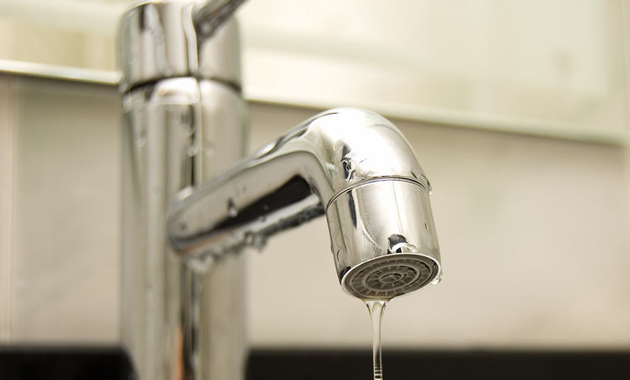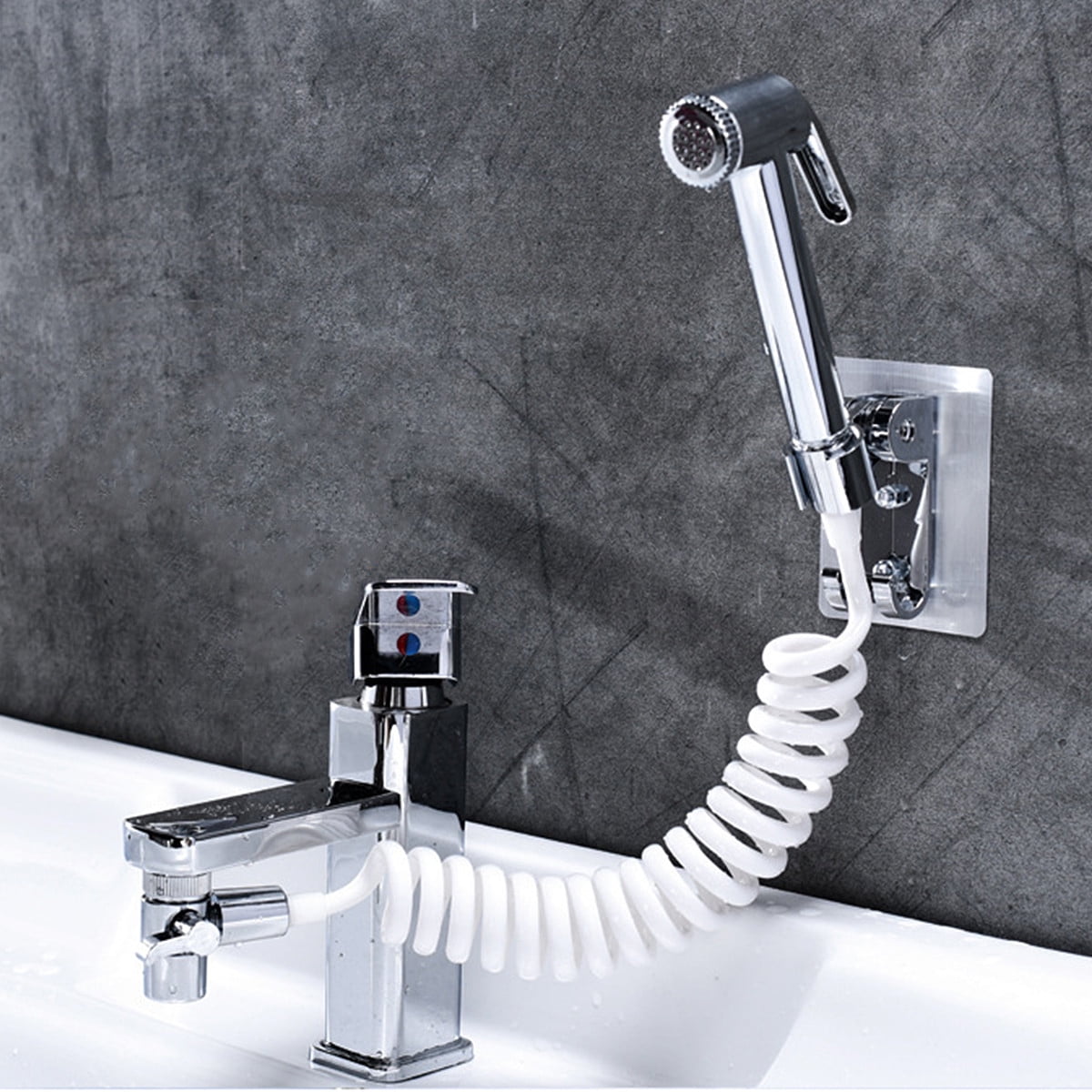Understanding the Causes of a Leaking Kitchen Faucet
Wear and Tear
Kitchen faucets are used frequently, and over time, this regular use can lead to wear and tear. The most common components that suffer from this wear are the washers, gaskets, and O-rings. These parts are essential for creating watertight seals and preventing leaks. As they degrade, they lose their effectiveness, leading to drips and leaks. Identifying worn-out parts early can help prevent more significant issues and extend the life of the faucet.
Corrosion and Mineral Buildup
Corrosion and mineral buildup are other common causes of leaking kitchen faucets. Water contains minerals that can accumulate inside the faucet, particularly in hard water areas. Over time, these minerals can corrode the metal components, leading to leaks. Regular cleaning and maintenance can help prevent mineral buildup. In some cases, using water softeners can also reduce the impact of hard water on the faucet.
:max_bytes(150000):strip_icc()/faulty-kitchen-faucet-140358503-5840b9c43df78c02309d3c30.jpg)
Loose or Damaged Parts
Loose or damaged parts are often to blame for a leaking kitchen faucet. The handle, spout, and base of the faucet can become loose over time, especially with frequent use. Additionally, internal parts like the cartridge or valve seat can become damaged or misaligned. Regularly checking and tightening these components can prevent leaks. If parts are damaged, replacing them promptly is crucial to maintaining a functional faucet.
High Water Pressure
High water pressure can contribute to faucet leaks by putting excessive strain on the internal components. Over time, this pressure can cause seals to break or components to crack. Monitoring and regulating the water pressure in your home can prevent such issues. Installing a pressure-reducing valve is a common solution to maintain a safe and consistent water pressure, protecting your plumbing fixtures.

Faulty Installation
Improper installation is another potential cause of a leaking kitchen faucet. If the faucet or its components are not installed correctly, it can lead to gaps or misalignments that cause leaks. Ensuring that the installation is done by a professional or following the manufacturer’s instructions carefully can prevent these problems. Double-checking connections and seals during installation can also help avoid future leaks.
Quality of the Faucet
The quality of the faucet itself plays a significant role in its longevity and resistance to leaks. Lower-quality faucets may use cheaper materials that are more prone to wear and damage. Investing in a high-quality faucet from a reputable brand can save money in the long run by reducing the likelihood of leaks and the need for frequent repairs. Researching and selecting a durable and reliable faucet is crucial for a long-lasting kitchen fixture.

Diagnosing a Leaking Kitchen Faucet
Identifying the Source of the Leak
The first step in diagnosing a leaking kitchen faucet is identifying the source of the leak. Start by observing where the water is coming from. Common sources include the spout, the base of the faucet, or the handles. Each location points to different potential issues. For instance, a leak from the spout often indicates worn-out washers or O-rings, while leaks at the base might suggest a problem with the seal or the connections.
Checking the Handles
If water is leaking from around the handles, it may indicate an issue with the stem or the packing nut. Remove the handle and inspect the stem for signs of wear or damage. Tightening the packing nut can sometimes resolve minor leaks. If the stem itself is damaged, it may need to be replaced. Handle leaks are often relatively straightforward to fix, but accurate diagnosis is key.
Inspecting the Spout
Leaks from the spout typically suggest problems with the cartridge, valve seat, or washers. Disassemble the faucet to inspect these components. Look for signs of wear, cracks, or buildup that could be causing the leak. Replacing worn-out washers or cartridges can often resolve leaks from the spout. Regular maintenance and cleaning can also help prevent these issues from recurring.
![]()
Examining the Base
Leaks from the base of the faucet are often due to issues with the seals or the mounting hardware. Check the area where the faucet meets the sink for any gaps or loose connections. Tightening the mounting hardware and replacing damaged seals can often stop leaks from the base. Ensuring a secure and watertight connection during installation can prevent these types of leaks from occurring.
Testing for Pressure Issues
High water pressure can exacerbate or even cause leaks in a kitchen faucet. Use a water pressure gauge to test the pressure in your home’s plumbing system. Ideal water pressure should be between 40 and 60 psi. If the pressure is too high, consider installing a pressure-reducing valve to protect your faucet and other plumbing fixtures from damage and leaks.
Observing for Hidden Damage
Sometimes, leaks are caused by hidden damage that is not immediately visible. Corrosion, cracks, or other damage inside the faucet can lead to leaks that are difficult to diagnose. If you’ve checked all the obvious components and the leak persists, it may be necessary to consult a professional plumber. They can perform a thorough inspection and identify any hidden issues that need to be addressed.

Fixing a Leaking Kitchen Faucet
Gathering the Necessary Tools
Before beginning any repair, gather the necessary tools and materials. Common tools needed for faucet repair include an adjustable wrench, screwdrivers, pliers, and replacement parts such as washers, O-rings, or cartridges. Having these tools on hand will make the repair process more efficient and reduce the likelihood of needing to pause to gather additional supplies.
Turning Off the Water Supply
Always turn off the water supply before beginning any repair on a kitchen faucet. Locate the shut-off valves under the sink and turn them clockwise to stop the flow of water. Open the faucet to release any remaining water in the lines. This step is crucial to prevent water damage and ensure a safe and dry working environment.
Disassembling the Faucet
Disassemble the faucet to access the internal components. Begin by removing the handle, which is usually secured with a screw. Once the handle is removed, you can access the cartridge, stem, or valve. Carefully remove these components, taking note of their arrangement for reassembly. Lay out the parts in the order you remove them to make reassembly easier.

Inspecting and Replacing Components
Inspect the internal components for signs of wear, damage, or buildup. Common issues include worn-out washers, damaged O-rings, and corroded valve seats. Replace any damaged parts with new ones that match the original components. Clean any mineral buildup or debris from the faucet before reassembling. Using high-quality replacement parts can extend the life of your faucet and prevent future leaks.
Reassembling the Faucet
After replacing the damaged components, carefully reassemble the faucet. Follow the reverse order of disassembly, ensuring that each part is correctly positioned. Tighten any screws, nuts, or bolts securely, but be careful not to over-tighten, as this can cause damage. Double-check that all components are properly aligned and secure before turning the water supply back on.
Testing the Repair
Once the faucet is reassembled, turn the water supply back on and test the repair. Open the faucet and check for any leaks around the repaired areas. If the faucet is still leaking, it may indicate that a part was not installed correctly or that there is another underlying issue. In such cases, revisiting the repair steps or consulting a professional plumber may be necessary.

Preventing Future Leaks
Regular Maintenance
Regular maintenance is essential to prevent future leaks in a kitchen faucet. Periodically inspect the faucet for signs of wear or damage and address any issues promptly. Cleaning the faucet and its components regularly can prevent mineral buildup and corrosion. Routine maintenance extends the life of the faucet and reduces the likelihood of unexpected leaks.
Monitoring Water Pressure
Monitoring and regulating water pressure in your home can prevent leaks and extend the life of your plumbing fixtures. High water pressure puts extra strain on faucets, leading to leaks and other damage. Use a water pressure gauge to check the pressure regularly and install a pressure-reducing valve if necessary. Maintaining optimal water pressure protects your faucet and other plumbing components.
Using Quality Parts
Using high-quality parts for repairs and replacements ensures the longevity and reliability of your kitchen faucet. Cheaper parts may wear out more quickly, leading to frequent leaks and additional repairs. Invest in durable and reputable components that are designed to withstand regular use. Quality parts may have a higher upfront cost but save money and hassle in the long run.

Proper Installation
Ensuring that your kitchen faucet is installed correctly is crucial to preventing leaks. If installing a new faucet or replacing components, follow the manufacturer’s instructions carefully or hire a professional plumber. Proper installation ensures that all seals and connections are secure and watertight, reducing the risk of leaks.
Addressing Issues Promptly
Addressing any issues with your kitchen faucet promptly can prevent minor problems from becoming major leaks. If you notice a drip, reduced water flow, or other signs of wear, investigate and repair the issue as soon as possible. Proactive maintenance and repairs keep your faucet functioning efficiently and prevent water waste and damage.
Educating Household Members
Educating household members about the proper use and care of the kitchen faucet can also prevent leaks. Avoid using excessive force when turning the faucet on and off, and do not hang heavy objects from the faucet or handles. Gentle and mindful use reduces wear and tear and extends the life of the faucet.

How To Repair A Dripping Delta Kitchen Faucet Kitchen Faucets

Sink Tap Faucet Extender, Spray Shower Head Water Tap Tool for Home

How to Fix a Leaking Glacier Bay Bathroom Sink Faucet – DIY Home Repair

Plastic Faucet PP Tap Male Thread Small Bibcock Easy Install Washing Machine Non Leaking Big

Related Posts:
- Moen Designer Kitchen Faucets
- Kitchen Faucet Hands Free
- Touch Sensor Kitchen Faucet Reviews
- Canadian Tire Kitchen Sink Faucets
- How To Replace Sink Faucet Kitchen
- Www Grohe Kitchen Faucets
- Leaky Faucet Kitchen Sink Single Handle
- Fantini Kitchen Faucet
- Almond Kitchen Sink Faucets
- Pegasus Pull Out Kitchen Faucet